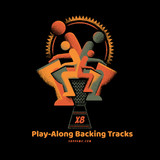Introduction to Cajon Drums
The world of cajons is constantly expanding. More and more musicians are embracing the utilitarian instrument with the beautiful sound, which means we are seeing a greater variety of features and styles in cajons these days. As the drum gains in popularity, various celebrated artists are finding ways to customize their own versions, adding more interest to an already compelling instrument.
Cajons have come a long way from their Afro-Peruvian slave roots, making them a source of enjoyment worldwide. With so many different people expressing an interest in the drum, picking a cajon has become a more detailed venture than it would have been just five years ago. Now, more than ever, an individual interested in playing a cajon might want to do an extensive search to insure coming away with the best fit for the person’s style, both musically and lifestyle-wise.
Cajons can still be found in a basic crate or box style, with little embellishment. For the purist or someone who wants a less accented drum sound, picking a basic cajon is the way to go. These cajons are without frills, including the increasingly common snare add-ons. The sound a percussionist interested in this version of the cajon will get is one reminiscent of days gone by. However, with the variety of wood and joining methods available, all basic cajons will not sound the same. Another feature that will affect the sound is size. While all cajons are made to be sat upon while being drummed, some are smaller than others. This also affects portability.
Snares are a common feature among cajons. Variety comes about due to snare placement, number and type of wires used, and adjustment capabilities. Cajon snares are usually guitar wires attached to the inside of the drum in various quantities so that when the drum is beat, a rattle-like, metallic sound is produced. Not everyone enjoys the sound, but many find it nice to have the option. When picking a cajon, you will find that most with the snare feature allow the snares to be removed or turned off in some way. Cajons with more than one playing surface generally have one surface with snares and one surface without, offering more play variety during songs. Some cajons may offer tambourine-like jingles inside rather than snares.
As cajons gain in popularity around the world, more and more features are becoming available. However, no matter how frou-frou a drum may get, the basics still have a place. A cajon with no extras is still a widely sought after and widely available instrument. Snares are another basic cajon feature that musicians must familiarize themselves with when picking a cajon. Custom-made cajons are a tradition that is gaining popularity along with the instrument. A cajon enthusiast who understands the drum as well as the variety of features should come away with an instrument that will provide many years of enjoyment.
Recent Posts
-
X8 Drums Play-Along Backing Tracks
The new X8 Play-Along Series is being produced for our musician friends wanting a fresh way to work …9th Feb 2025 -
What is the Best Size Djembe for Beginners?
If you're new to the world of percussion and interested in learning the djembe, you're in for a t …16th Jul 2024 -
The Benefits of Becoming a Drumming Teacher: Transforming Passion into Profession
Why become a drumming teacher? Becoming a drumming teacher is an excellent way to share your pas …22nd May 2024




